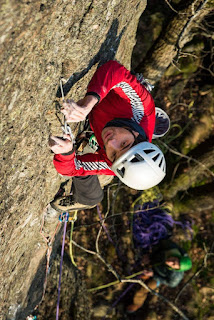Tying off a Munther hitch - skip the Mule

Knots should not just be useful. They need to be easy to teach and hard to get wrong even under stress. A very important skill for any climber is to be able to tie off a belay device or Munther hitch. Whenever you need to get your hands free for a snack, a photo, or transfer loads in a rescue situation, that passive end needs to go somewhere. The classic solution, especially in North America, seems to be the Munther-Mule. It is safe, can be released easily under load, and most importantly, knot nerds (like your average climbing instructor) like complicated knots with unintelligible names. If you are not sure what I mean, here is the Animated Knots page ! The Munther-Mule combination. The backup half hitch has been omitted for clarity. I should start by making it very clear that this is a tried and tested method. Technically, there is nothing wrong with a properly tied Munther-Mule combination, and if you like it, use it! But I strive to teach knots that are easy to use,



